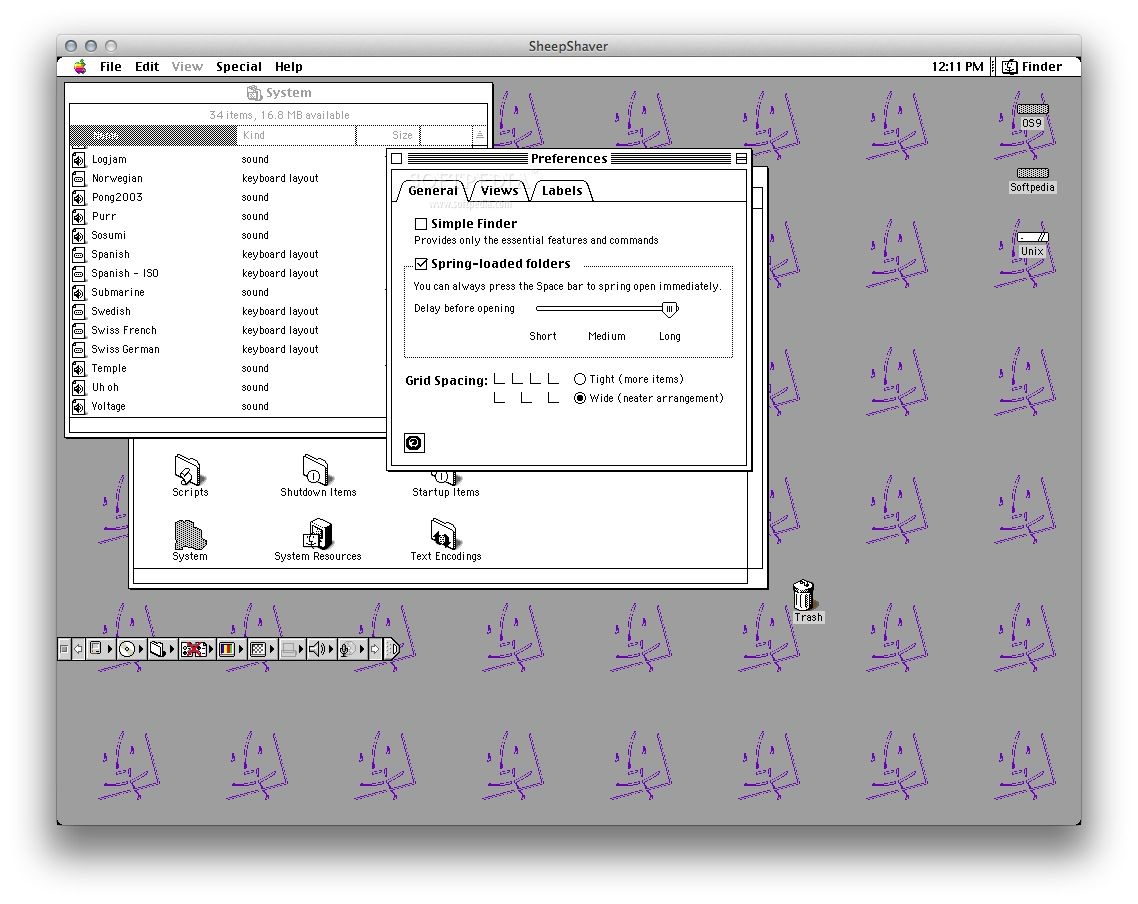

The third thing you’ll need is a little trickier to come by: you’re going to need the ROM image of a new world Mac, like a PowerMac G4.

Of course, there’s always the option of going the way of the pirate, but this is most likely illegal in your country of residence. Believe it or not, genuine and new copies of MacOS 9 can still be found in online stores today, but even if you can’t find one online, your local Apple retailer might still have a few copies lying around (at least, that’s how I got two free copies). Since I have two Macs capable of running classic versions, that was no problem for me. Of course, you’ll also need a copy of MacOS 9.0.4. I used the 64bit build found here, and it works fine on Ubuntu Lucid Lynx.
Sheepshaver rom mac os x#
You can build it yourself, or grab a binary binaries for Windows and Mac OS X are easy to get, but for Ubuntu, you’ll have to try a little harder. You’ll need a few things before you can get going. Even though SheepShaver can run earlier versions, I’m focussing on MacOS 9.0.4. As of late, development has been focussed on Windows and Mac OS X, but pre-built Debian packages have appeared for 64bit and 32bit Ubuntu installations too. SheepShaver is basically a PowerPC emulator that fakes an entire PowerPC-based Macintosh in software so that you can run MacOS 7.5.2 through 9.0.4 on Windows, Mac OS X, Linux, and BeOS. I decided to try SheepShaver on my Ubuntu machine, and discovered just how easy it really is. This environment has been dropped from Intel releases of Mac OS X, but thanks to SheepShaver, you can still set it up yourself on Mac OS X, Linux, Windows, and even BeOS if you want to. Remember MacOS 9, or Classic as Apple named it once Mac OS X was released? On PowerPC Macintosh machines, you can install a Classic environment which launches a virtualised instance of MacOS 9 whenever you launch a Classic application.


 0 kommentar(er)
0 kommentar(er)
